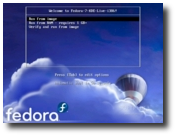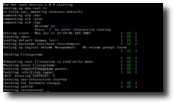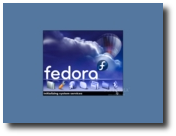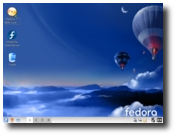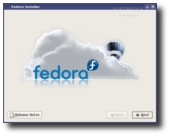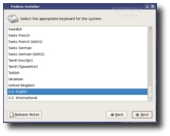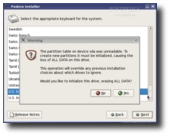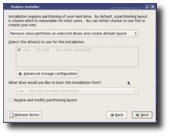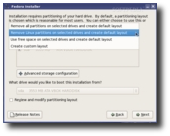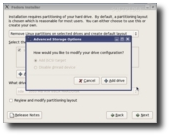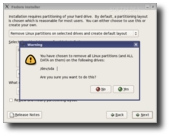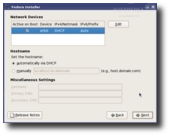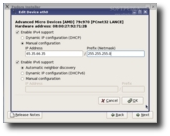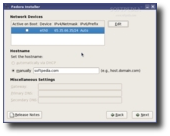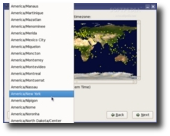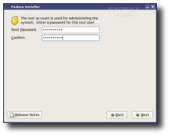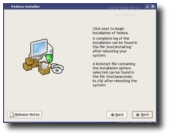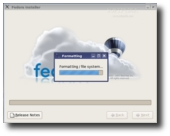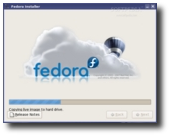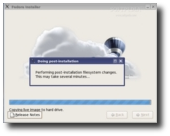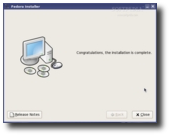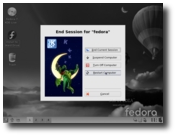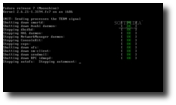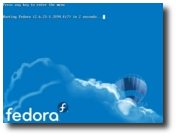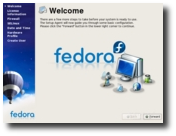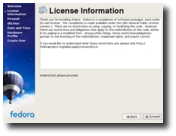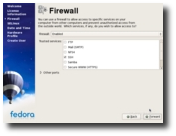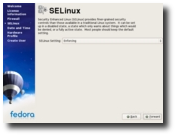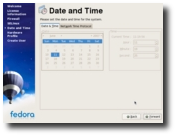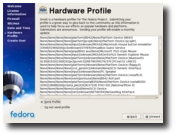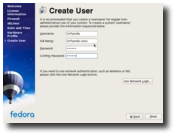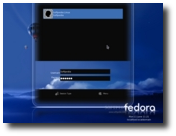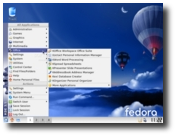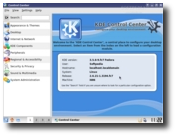Fedora 7 (codename Moonshine) was released on 31 May and it's the most breathtaking version of the Fedora operating system. Not only does this release bring an installable LiveCD for both i686 and x86_64 machines, but it also comes with an exclusive KDE LiveCD.
I always recommend having an empty hard drive for a Linux installation (that means no other operating system on it, no Windows) and you must have a minimum of 10 GB free space for the Fedora installation. Great, now let's begin.
For this installation, I've used the KDE LiveCD and I recommend the same for all of you KDE lovers out there. Burn it on a blank disc with your favorite CD/DVD burning application, then insert the disc in the optical drive of the computer on which you want to install Fedora and boot from it. You'll be presented with a very nice Fedora artwork GRUB splash and some options, see pictures below. At this part, I simply suggest you to press ENTER, and wait for the system to load.
In about 30 seconds (depending on your computer specs) you will see the KDE splash screen and then the Fedora desktop will appear with three icons: Fedora 7 KDE LiveCD, Install to Hard Drive and Trash. Only one icon is of interest to us: the Install to Hard Drive (of course). So, double click it and wait for the GUI (graphical user interface) to appear.
Ain't that beautiful? It is, but that is just the main screen of the installer, so please click next and select the appropriate keyboard for the system.
Click next after you've chosen the desired keyboard layout and you'll see a warning pop-up. Don't get scared, it's normal, as this pop-up will inform you that ALL THE DATA from your hard drive will be erased (that's why I always recommend having an empty hard disk). Click Yes to accept and you will arrive on the partitioning step of the installation process.
Here, if you have an empty hard drive, all you have to do is click next (make sure the "Remove Linux partitions on selected drives and create default layout" option is selected). If you don't have an empty hard drive and you still want to install Fedora 7 on your machine, then make sure you select the "Use free space on the selected drives and create default layout" option (10 GB minimum free space is required). Clicking next, you'll get a warning message; just click Yes and on the next step you must configure your network.
If you have a DHCP network (dynamic IP address) you can click next, but if you have a static IP address (ask your provider if you're not sure) follow the instructions below.
- Click the 'Edit' button (a new window will appear) - If you have an IPv4 address, make sure it's enabled. If you have an IPv6 address make sure it's enabled (if you don't have an IPv6 address, uncheck the 'Enable IPv6 support' option). - Check the "Manual configuration" option and enter your IP address and the Netmask (ask your provider if you don't know them). Do the same for the IPv6 address (if you have one). - Click OK when you're finished. - Enter your Gateway and Primary/Secondary DNS servers. - Optional, you can setup the system's hostname (e.g. john.fedora.linux).
When you're done with the network configuration, click next and you will be asked to select your location (country/city). Once you've selected your timezone, click next and you must enter the root (System Administrator) password. The longer, the better (WRITE IT SOMEWHERE OR MEMORIZE IT).
Hit the next button twice and now everything will be done automatically, just sit back and watch how the partitions are formatted and the live image copied to your hard drive, or you can read the latest news while enjoying a cup of coffee. The installation process will take about 8-10 minutes (depending on your computer specs).
When the installation is over, you will get a "Congratulations, the installation is complete" screen. Click the 'Close' button and reboot your PC. Wait for the system to restart, remove the CD from your optical drive (CD/DVD-ROM) and your brand new Fedora 7 Linux operating system will start for the first time.
Before you reach the Fedora desktop, you must do a one-time general system configuration:
1. Accept the license (it's free, don't worry) and click Forward. 2. Configure your firewall. By default, SSH is checked but if you don't use it, uncheck it! 3. Leave SELinux as it is (Enforcing) and click the 'Forward' button. 4. Make sure the date and time are correctly setup. 5. Submit your hardware profile to the Fedora Project to help focus their efforts on popular hardware and platforms. The submissions are anonymous, so do it to improve the next Fedora systems! 6. Create a user account.
That's it! Now log in to your new Linux OS (with the user and password you've just created) and enjoy the ultimate, spectacular, breathtaking Fedora 7 distribution.
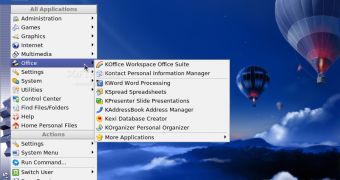
 14 DAY TRIAL //
14 DAY TRIAL // 